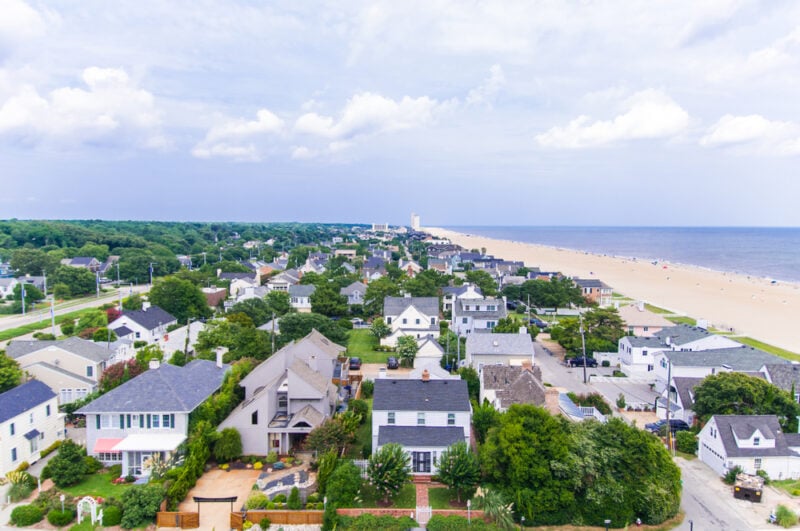The 30 Richest Places to Live in Kansas: Wealth Analysis by Community
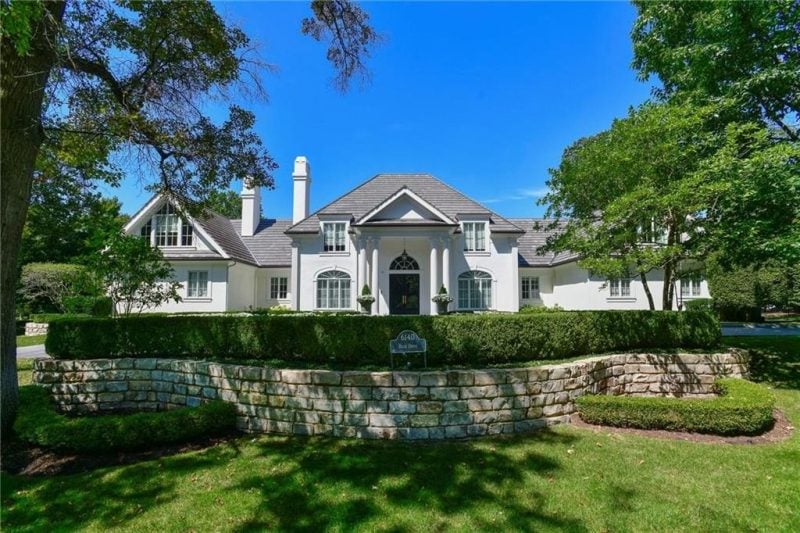
Kansas contains numerous affluent communities that offer residents exceptional living standards and economic opportunities. These wealthy areas span across different regions of the state, with many concentrated in the Kansas City metropolitan area and other major urban centers.
Understanding which Kansas communities offer the highest income levels and property values helps prospective residents identify areas with strong economic foundations and quality amenities.
The state’s wealthiest locations typically feature well-established neighborhoods, excellent schools, and proximity to major employment centers.
These communities demonstrate how geographic location, local industries, and municipal planning contribute to creating prosperous residential areas throughout Kansas.
Here are the 30 richest places to live in Kansas:
1. Mission Hills
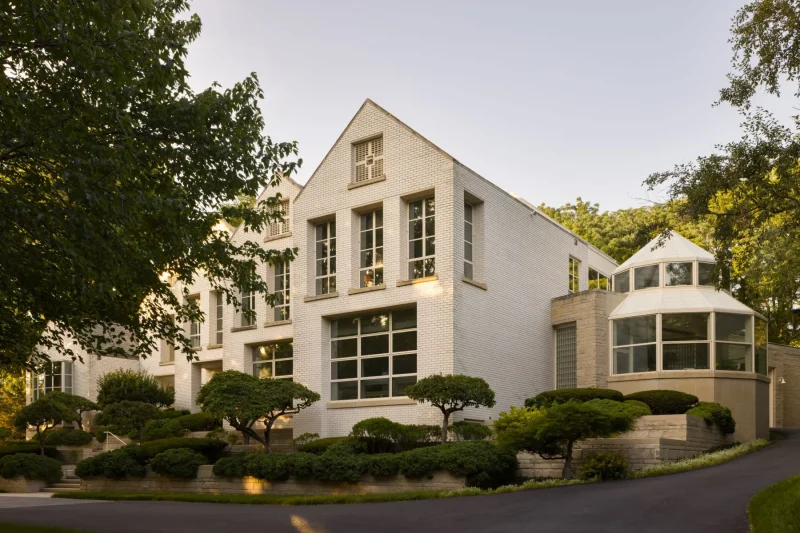
Mission Hills stands as Kansas’s wealthiest city, with a median household income exceeding $250,000. The city ranks as the third wealthiest municipality in the entire United States according to Forbes Magazine.
Located in Johnson County, Mission Hills forms part of the Kansas City Metropolitan Area. The community has a population of approximately 3,556 residents as of recent census data.
Home values in Mission Hills reflect its affluent status. The typical home value reaches $1,570,558, making it the most expensive residential area in Kansas.
Urban planner J.C. Nichols envisioned Mission Hills in 1912. The city represents luxury living and social prestige within the Kansas City region.
Mission Hills consistently receives recognition for its high quality of life. It ranks among the best places to live in Kansas and maintains its position as the state’s premier wealthy enclave.
2. Leawood
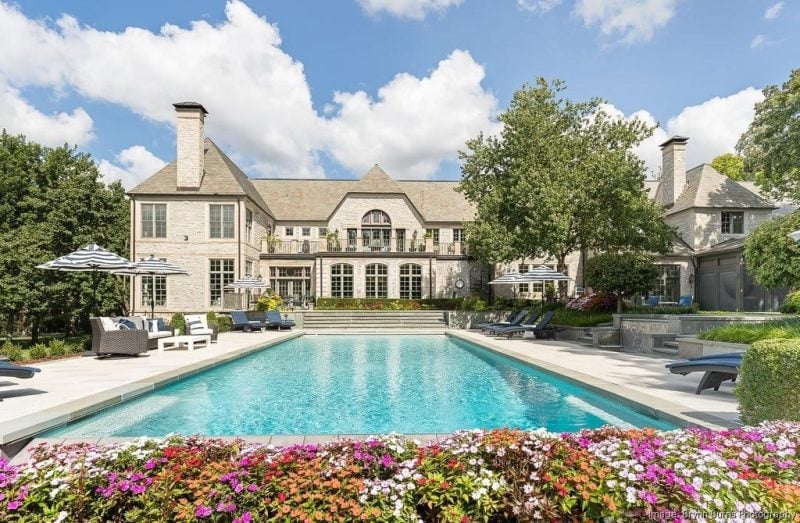
Leawood stands as one of Kansas’s most affluent communities, located in Johnson County within the Kansas City metropolitan area. The city consistently ranks among the wealthiest places in the United States.
The median household income in Leawood significantly exceeds the national average. High levels of educational attainment characterize the population, with many residents holding professional positions.
Home values in Leawood reflect the community’s prosperity. The city’s socioeconomic profile shows sustained population growth alongside rising property values.
WalletHub ranked Leawood 15th among the best small cities in America, making it the only Johnson County municipality to achieve this distinction. The ranking considered overall livability factors.
Leawood’s strategic location provides residents access to metropolitan amenities while maintaining its suburban character. The community attracts well-educated professionals who value cultural offerings and fine arts within an established, prestigious environment.
3. Fairway
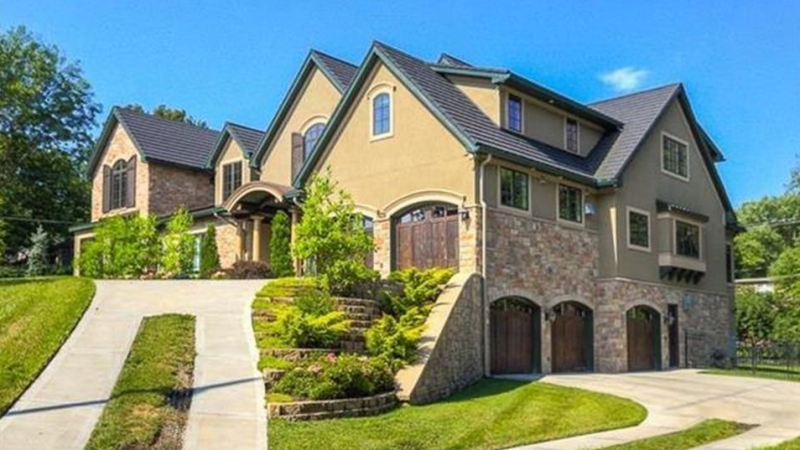
Fairway stands among Kansas’s most affluent communities, consistently ranking alongside Mission Hills and Leawood as one of the state’s wealthiest cities. This small city attracts high-income residents seeking upscale living in the Kansas City metropolitan area.
The community features significantly higher home values compared to Kansas averages. Property prices in Fairway exceed the state average of $185,150 by substantial margins, reflecting the area’s desirability and economic prosperity.
Fairway’s neighborhoods represent some of the most sought-after residential areas in Kansas. The real estate market demonstrates strong demand, with home values serving as indicators of the community’s affluent status.
Located in Johnson County, Fairway benefits from its proximity to Kansas City while maintaining its distinct character as an upscale residential enclave. The city continues to attract wealthy residents who value quality of life and premium housing options.
4. Overland Park
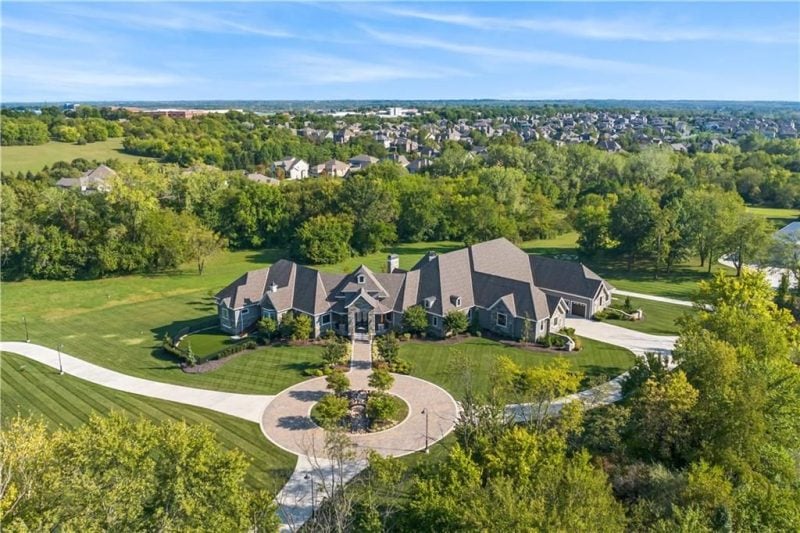
Overland Park stands as one of Kansas’s most affluent communities and consistently ranks among America’s most livable cities. This Kansas City suburb houses approximately 190,000 residents.
The typical home value reaches $469,289, with property values increasing 1.6% over the past year. The median home price sits at $302,000, reflecting the city’s desirable real estate market.
Cost of living runs 11% above the national average. The city attracts residents seeking luxury living with neighborhoods like Colton Lake offering refined lifestyles.
Overland Park successfully combines business opportunities with upscale residential areas. The community receives regular recognition from national publications for its quality of life and economic opportunities.
The city’s proximity to Kansas City provides metropolitan amenities while maintaining suburban appeal.
5. Spring Hill
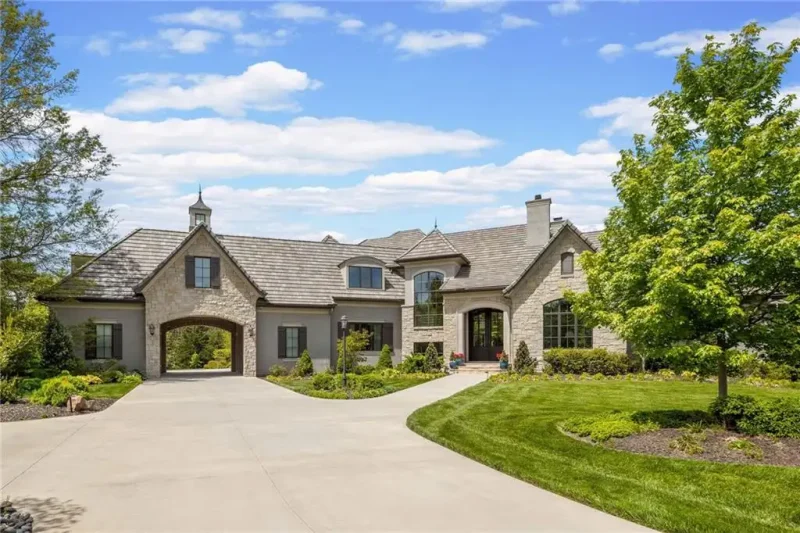
Spring Hill straddles Johnson and Miami Counties as one of the southernmost suburbs in the Kansas City metropolitan area. The city has experienced significant growth over the past decade due to its strategic location and attractive amenities.
The community offers affordable housing stock combined with newer residential developments. These features have made Spring Hill a high-demand location for families and professionals seeking suburban living.
Home prices in Spring Hill exceed the Kansas state average of $185,150. The higher property values reflect the area’s desirability and continued residential development.
Local amenities and proximity to Kansas City make Spring Hill appealing to residents who want suburban comfort with urban access. The city’s growth trajectory positions it among Kansas’s more prosperous communities.
Spring Hill’s combination of newer housing, strategic location, and strong market demand contributes to its status as one of the state’s wealthier places to live.
6. Lenexa
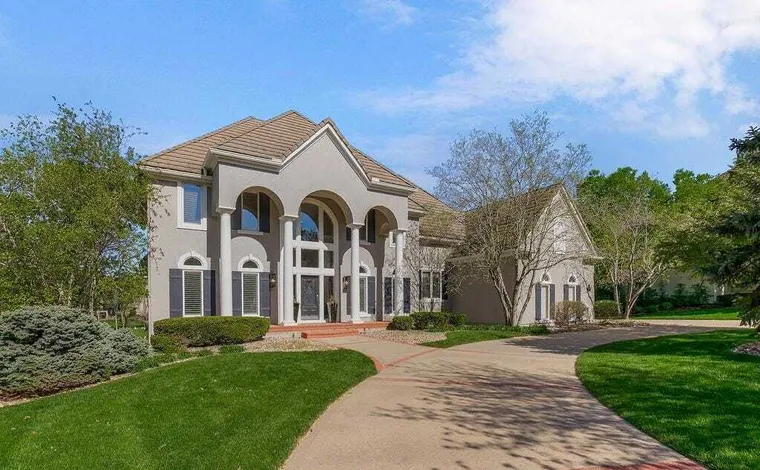
Lenexa stands as one of Kansas’s most affluent communities with a median household income of $112,570. This places the city in the 95th percentile for household incomes across the United States.
The city’s wealth correlates strongly with its highly educated population. About 58% of adults in Lenexa hold bachelor’s degrees or higher, nearly double the national average of 31%.
Lenexa offers suburban appeal with extensive parks and trails that attract families seeking quality of life. The city maintains a strong sense of community while providing modern amenities.
Located in Johnson County, Lenexa benefits from its proximity to the Kansas City metropolitan area. This positioning provides residents access to employment opportunities while maintaining a more relaxed suburban environment.
7. Olathe
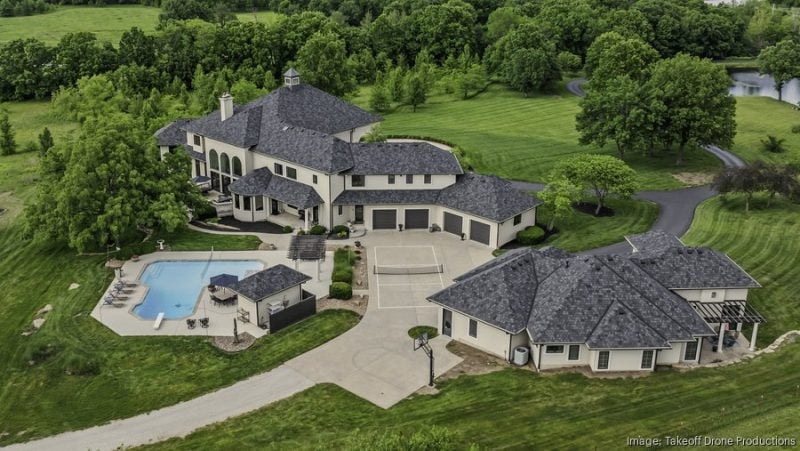
Olathe stands as one of Kansas’s most prosperous cities and consistently ranks among the best places to live in the United States. The city attracts residents with its strong economy and excellent quality of life.
Located in Johnson County, Olathe benefits from its proximity to Kansas City while maintaining its own distinct identity. The city offers a blend of suburban comfort and economic opportunity.
Olathe’s median household income varies by neighborhood, with several high-earning areas contributing to its wealthy status. These affluent districts feature well-established residential communities.
The city’s economic strength stems from diverse industries and a educated workforce. Major employers provide stable, well-paying jobs that support the local economy.
Residents enjoy access to quality schools, recreational facilities, and cultural amenities. The combination of economic prosperity and livability makes Olathe attractive to families and professionals seeking an upscale Kansas community.
8. De Soto
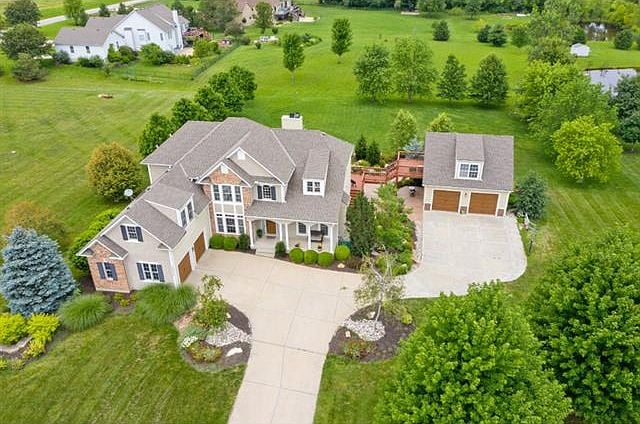
De Soto sits in western Johnson County along the Kansas River. The city maintains a small-town atmosphere while offering convenient access to the Kansas City metropolitan area.
The community is positioned along the K-10 corridor. This location provides easy transportation to both Kansas City and Lawrence.
De Soto represents a transition zone between suburban Kansas City and rural Kansas. Residents enjoy the benefits of proximity to urban amenities while living in a quieter setting.
The city has experienced steady growth in recent years. New developments have attracted families seeking affordable housing options near major employment centers.
De Soto offers lower cost of living compared to other Johnson County cities. The community features parks, recreational facilities, and local businesses that serve residents’ daily needs.
9. Prairie Village
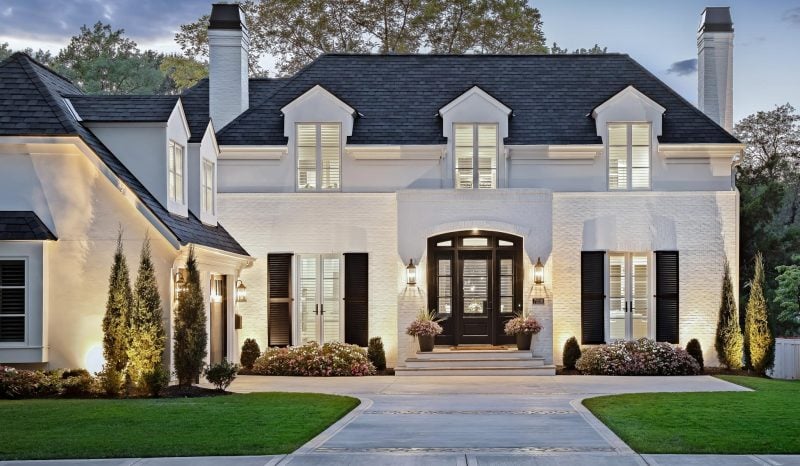
Prairie Village ranks among Kansas’s most desirable suburban communities. This Johnson County city maintains a population of approximately 22,937 residents across 6.7 square miles.
The city consistently appears on lists of Kansas’s wealthiest municipalities. Prairie Village attracts affluent residents who value its established neighborhoods and prime location.
Home values in Prairie Village exceed the Kansas state average of $185,150 by a significant margin. The eastern corridor represents the city’s most prestigious area, featuring architectural significance and oversized lots.
The community benefits from proximity to Mission Hills Country Club. This location factor contributes to Prairie Village’s position as one of Kansas’s most valuable residential areas.
Prairie Village offers residents access to quality amenities including shopping at Village Shops. The city combines suburban comfort with upscale living standards that appeal to higher-income households.
10. Basehor
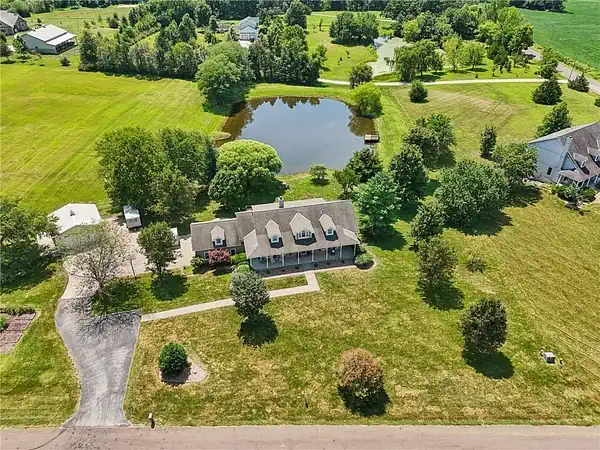
Basehor sits in Leavenworth County, Kansas, and ranks among the state’s wealthiest communities. The city attracts affluent residents seeking quality suburban living near the Kansas City metropolitan area.
The community features well-maintained neighborhoods with higher-than-average property values. Many residents work in professional careers and commute to nearby employment centers.
Basehor offers excellent public schools through the Basehor-Linwood school district. The district maintains strong academic performance ratings and provides quality educational opportunities for families.
The city provides various recreational amenities including parks and community facilities. Residents enjoy access to golf courses and outdoor recreation areas throughout the region.
Housing costs in Basehor reflect the area’s desirability and economic prosperity. The median household income exceeds both state and national averages, contributing to its ranking among Kansas’s richest places.
11. Gardner
Gardner ranks as one of Kansas’s most desirable communities with strong economic indicators. The city maintains a population of 21,936 residents and has earned recognition on multiple best places to live lists.
The typical household in Gardner earns $78,193 annually. This income level exceeds the national median of $67,500 by a notable margin.
Gardner’s poverty rate stands at just 6 percent. This figure represents 57 percent lower than the national average, indicating widespread economic stability throughout the community.
Home prices in Gardner exceed Kansas state averages. The median home value surpasses the state average of $185,150, reflecting the area’s desirability and economic strength.
The city recently received recognition as the 10th best place to live in Kansas according to Money Inc.’s rankings. This acknowledgment highlights Gardner’s appeal among Kansas communities for residential living.
12. McLouth
McLouth stands out as one of Kansas’s most remarkable real estate success stories. This small Jefferson County town has nearly tripled in home values since 2010.
The community experienced modest growth through 2019 before dramatic acceleration during the pandemic years. Home values jumped from $190,006 in 2019 to $346,459 by 2025.
This represents exceptional appreciation for rural Kansas. McLouth shows the second-highest percentage growth among expensive Kansas towns.
The town’s home prices now exceed the state average of $185,150. McLouth demonstrates how smaller communities can experience significant wealth accumulation through strategic location and market timing.
13. Baldwin City
Baldwin City ranks among Kansas’s more affordable communities while maintaining solid property values. The city consistently appears in state rankings for quality of life factors.
Home prices in Baldwin City exceed the Kansas state average of $185,150. This premium reflects the community’s desirable location and amenities that attract residents.
The city earned recognition in several national categories. Baldwin City ranked 1,945 out of 18,043 for best places to buy a house in America.
Families find Baldwin City appealing for its educational opportunities and community atmosphere. The city placed 4,368 out of 18,084 in best places to raise a family rankings.
Baldwin City offers a balance of small-town character with proximity to larger metropolitan areas. This combination contributes to its stable real estate market and continued residential appeal.
14. Paola
Paola serves as the county seat of Miami County in eastern Kansas. The city sits approximately 55 miles south of Kansas City, providing residents access to metropolitan amenities while maintaining a small-town atmosphere.
The community has a population of around 5,600 residents. Paola’s economy benefits from its proximity to the Kansas City metro area, allowing many residents to commute to higher-paying jobs while enjoying lower housing costs.
The median household income in Paola exceeds the state average. Local employers include healthcare facilities, manufacturing companies, and government offices that provide stable employment opportunities.
Housing costs remain relatively affordable compared to metropolitan areas. The city offers a mix of historic homes and newer developments that attract families and professionals.
Paola features several parks and recreational facilities. The town maintains strong community ties through local events and organizations that contribute to its appeal as a residential destination.
15. Tonganoxie
Tonganoxie stands out among Kansas communities for its strategic location within commuting distance of Kansas City. This positioning allows residents to enjoy small-town living while maintaining access to urban amenities and employment opportunities.
The city has experienced remarkable real estate growth over the past decade. Home values increased from $140,177 in 2010 to $357,428 in 2025, representing a 154.98% increase that outpaces most regional competitors.
Recent market trends show continued momentum with a 58.68% jump in home values over the last five years since 2020. This growth trajectory reflects strong demand and economic development in the area.
Tonganoxie home prices exceed the Kansas state average of $185,150, indicating the community’s desirability among homebuyers. The city ranks 3,698 out of 18,043 nationally for best places to buy a house, demonstrating its competitive position in the real estate market.
16. Lecompton
Lecompton stands as a historic small town in Douglas County with a population of approximately 650 residents. The community maintains a quiet rural character while offering proximity to larger metropolitan areas.
The town’s median household income reaches around $65,000, placing it among Kansas’s more comfortable communities. Property values remain moderate, with median home prices typically ranging from $180,000 to $220,000.
Lecompton’s location provides residents easy access to Lawrence and the Kansas City metropolitan area. This positioning allows for employment opportunities in larger cities while maintaining small-town living.
The community features well-preserved historic architecture and several notable landmarks. Residents enjoy low crime rates and a strong sense of community engagement.
Housing costs remain reasonable compared to urban centers, making homeownership accessible for middle-income families. The town attracts those seeking a peaceful lifestyle with historical significance.
17. Edwardsville
Edwardsville sits in Wyandotte County as part of the Kansas City Metropolitan Area. The city recorded a population of 4,717 residents according to the 2020 census.
The typical household in Edwardsville earns $65,650 annually. This figure falls slightly below the national median household income of $67,500.
Edwardsville maintains a poverty rate of 7.2%. This rate stands 49% lower than the national average, indicating strong economic stability for most residents.
Approximately 32.7% of households earn less than $50,000 per year. This percentage compares favorably to the national figure of 39% in the same income bracket.
The city’s location within the Kansas City metro area provides residents access to urban amenities while maintaining a smaller community atmosphere. Edwardsville offers economic advantages through its below-average poverty rate and proximity to metropolitan employment opportunities.
18. Westwood
Westwood stands as one of Johnson County’s most desirable communities. This first-ring suburb sits just minutes from the Kansas-Missouri state line.
The city offers residents immediate access to Kansas City metropolitan area amenities. Employment centers, cultural institutions, and dining options are all within easy reach.
Westwood home prices significantly exceed the Kansas state average of $185,150. The premium real estate market reflects the community’s desirability and affluent character.
The neighborhoods represent some of the most sought-after residential areas in the region. Market demand consistently drives property values higher than surrounding communities.
Westwood’s strategic location combines suburban tranquility with urban accessibility. Residents enjoy a cherished community atmosphere while maintaining close proximity to major metropolitan resources.
19. Westwood Hills
Westwood Hills ranks among Kansas’s most expensive residential communities. The city has a typical home value of approximately $616,000.
This affluent suburb sits in the Kansas City metropolitan area. The community maintains a rural feel despite its proximity to urban amenities.
Home values in Westwood Hills have increased by 4.0% over the past year. The five-year price growth reaches nearly 40%, reflecting strong market demand.
The city attracts wealthy residents seeking exclusive neighborhoods. Most residents own their homes rather than rent.
Westwood Hills has a small population of around 484 people. This limited size contributes to its intimate, upscale character.
The strategic location between Kansas City offers residents easy access to employment centers. Johnson County provides excellent schools and municipal services for families.
20. Roeland Park
Roeland Park stands out as an affluent community in the Kansas City metropolitan area. The city maintains a median household income of $89,385, significantly above the state average.
Per capita income reaches $67,451, reflecting the economic prosperity of residents. The poverty rate remains relatively low at 11.46%.
Housing costs drive much of the area’s expense profile. The average home price sits at $284,000, though recent data shows an 8.4% decline from previous months.
Real estate in Roeland Park ranks among the most expensive in Kansas. The housing market scores 92 out of 100 for competitiveness.
Despite high property values, Roeland Park offers relative affordability compared to surrounding wealthy communities. The overall cost of living index stands at 97.7, just below the national average of 100.
21. Shawnee
Shawnee ranks among Kansas’s most prosperous communities, located in Johnson County within the Kansas City metropolitan area. The city consistently appears in top livability rankings for the state.
Shawnee County shows a per capita income of $25,705 according to recent census data. This places it among the higher-earning areas in Kansas.
The community benefits from its proximity to Kansas City and access to regional employment opportunities. Residents enjoy suburban amenities while maintaining reasonable cost of living compared to neighboring areas.
Shawnee has earned recognition as the third-best place to live in Kansas according to recent rankings. The city offers established neighborhoods and family-friendly environments.
The area attracts professionals and families seeking quality schools and community resources. Local infrastructure supports both residential and commercial development throughout the region.
22. Bonner Springs
Bonner Springs sits in Wyandotte County near the Kansas City metropolitan area. The city offers residents a sparse suburban environment where most people own their homes.
The median household income reaches $82,208, with per capita income at $58,168. This places Bonner Springs above many Kansas communities in terms of earning potential.
Housing options range from ranch-style homes to luxury builds on larger lots. The proximity to Kansas City provides access to major attractions while maintaining small-town characteristics.
Bonner Springs receives a cost of living score of 83.3, making it more affordable than the national average. The poverty rate stands at 12.57%, which is relatively moderate for the region.
The city attracts families seeking affordable homes with ample space near urban amenities. Wealthier residents often gravitate toward areas near Lake Quivira and the Basehor-Bonner-Linwood triangle.
23. Spring Hill South
Spring Hill South represents an affluent residential area within Johnson County’s Spring Hill community. The neighborhood attracts upper-middle-class families seeking quality housing in one of Kansas’s desirable suburban locations.
Typical home values in the Spring Hill area reach $418,991 as of recent market data. The community has experienced steady property appreciation with a 43% increase over the past five years.
Residents benefit from Spring Hill’s overall reputation as one of the best places to live in Kansas. The area offers well-maintained neighborhoods with newer construction and established family-friendly amenities.
The southern section of Spring Hill maintains the community’s characteristic suburban appeal. Housing options primarily consist of single-family homes ranging from three to four bedrooms.
Families choosing this area often appreciate the combination of modern conveniences and small-town atmosphere that Spring Hill provides.
24. Lansing
Lansing ranks as the 24th richest place to live in Kansas. The city has a median household income of $100,871 and an average per capita income of $45,666.
Located about 30 miles northwest of downtown Kansas City, Lansing offers small-town living with ongoing development. The poverty rate stands at 5.22%, indicating strong economic stability.
Housing costs remain affordable compared to national standards. The median home price in Lansing is $175,445, significantly lower than the US median of $318,879.
The cost of living in Lansing runs 17% below the national average. A family needs approximately $52,560 annually to live comfortably, while single residents require about $45,600.
Lansing provides safe neighborhoods and proximity to Kansas City attractions. The community benefits from friendly residents and access to urban amenities while maintaining its small-town character.
25. Louisburg
Louisburg stands out among Kansas communities for its above-average property values. Home prices in this city exceed the state average of $185,150, indicating stronger local economic conditions.
The city attracts residents seeking quality neighborhoods with solid market appeal. People consistently choose Louisburg for its desirable living conditions and community amenities.
Located in Miami County, Louisburg offers a blend of small-town charm with proximity to larger metropolitan areas. This positioning contributes to its economic stability and residential appeal.
The housing market reflects the community’s desirability among Kansas residents. Property values demonstrate sustained demand for homes in well-regarded neighborhoods throughout the area.
Louisburg maintains its reputation as an attractive place to live through consistent community development and local investment.
26. Eudora
Eudora sits in Douglas County and offers residents a suburban-rural lifestyle. The city has a population of approximately 6,503 people and continues growing at a steady annual rate.
The per capita income in Eudora reached $40,537 in 2022. This income level ranks as wealthy relative to Kansas standards and upper middle income compared to national averages.
Housing values in Eudora show strong performance with typical home values at $329,024. The market experienced a 3.5% increase over one year and a substantial 47.8% gain over five years.
The cost of living remains attractive at 9% below the national average. Most residents own their homes in this Douglas County community.
The southwest areas of Eudora contain the most desirable neighborhoods. More affordable housing options exist in the northwest sections of the city.
27. Eudora East
Eudora East represents one of the more affordable wealthy communities in Kansas while maintaining solid property values. The neighborhood benefits from its proximity to Lawrence and the Kansas City metropolitan area.
Home prices in Eudora consistently exceed the Kansas state average of $185,150. This premium reflects the area’s desirable location and quality amenities.
The eastern section of Eudora attracts families seeking suburban comfort with rural charm. Residents enjoy lower crime rates and well-maintained neighborhoods.
Local schools serve the community effectively, contributing to stable property values. The area maintains its small-town character while offering modern conveniences.
Eudora East provides access to recreational opportunities and green spaces. The community’s strategic location allows for reasonable commutes to major employment centers in the region.
28. Leavenworth
Leavenworth sits in Leavenworth County, approximately 30 miles northwest of Kansas City. The city serves as the county seat and has historical significance dating back to the 1850s.
The community maintains a stable housing market with home prices similar to Kansas state averages around $185,150. Several established neighborhoods offer quality residential options for families and professionals.
Leavenworth County consistently ranks among Kansas’s more desirable areas for living. The region benefits from its proximity to the Kansas City metropolitan area while maintaining a smaller city atmosphere.
The city’s economy includes diverse employment sectors, with Fort Leavenworth serving as a significant economic anchor. Educational opportunities and recreational amenities contribute to the area’s appeal for residents seeking suburban living options.
Transportation access to Kansas City provides additional employment and cultural opportunities for Leavenworth residents.
29. Piedmont
Piedmont sits in Greenwood County in southeastern Kansas. This small community maintains a rural character with agricultural surroundings.
The city offers lower housing costs compared to Kansas’s wealthier metropolitan areas. Residents benefit from a quiet lifestyle away from urban congestion.
Piedmont’s economy relies primarily on farming and related agricultural activities. The community provides basic services for local residents.
The area features open spaces and farmland typical of rural Kansas. Property values remain affordable for those seeking rural living.
Local amenities are limited compared to larger cities. Residents often travel to nearby towns for shopping and services.
Piedmont attracts people who prefer small-town living and agricultural connections. The community maintains its traditional rural Kansas identity.
30. Mission Woods
Mission Woods ranks as the second richest city in Kansas. The city borders Mission Hills directly to the north, sharing proximity to the state’s wealthiest community.
This small municipality houses only 61 households. Despite its tiny size, Mission Woods maintains exceptional affluence levels throughout the community.
The city occupies a prime location along the Kansas-Missouri state line. This positioning provides residents with convenient access to the Country Club Plaza district.
Mission Woods offers one of the most accessible connections to Missouri’s upscale shopping and business areas. The strategic location enhances property values and attracts high-income residents.
The community’s exclusivity stems partly from its limited housing stock. With fewer than 70 households, Mission Woods maintains an intimate residential atmosphere while delivering luxury living standards.
Factors That Contribute to Wealth in Kansas Communities
Wealth accumulation in Kansas communities stems from three primary factors: diverse economic foundations anchored by major industries, robust educational systems that create skilled workforces, and strategic real estate markets that balance growth with affordability.
Economic Drivers and Major Industries
Kansas communities with higher wealth levels typically benefit from diversified economic bases. The state’s economy relies heavily on agriculture, aviation manufacturing, and energy production as core wealth generators.
Agriculture and Agribusiness form the backbone of many wealthy rural Kansas communities. Commodity prices for wheat, corn, and cattle directly impact local prosperity. Processing facilities and agricultural technology companies create additional high-paying jobs.
Aviation and Manufacturing sectors concentrate wealth in specific regions. Wichita’s aircraft manufacturing industry, including companies like Spirit AeroSystems, generates substantial household incomes. These positions often require specialized skills and offer competitive compensation packages.
Energy Production contributes significantly to community wealth through oil, natural gas, and wind energy operations. Royalty payments to landowners and high-paying technical jobs in energy extraction boost local income levels.
Healthcare and Professional Services drive wealth in larger Kansas cities. Medical centers, legal firms, and financial services create employment opportunities for highly educated professionals with above-average earning potential.
Local Education and Employment Opportunities
Educational infrastructure directly correlates with community wealth levels across Kansas. Areas with strong school systems and higher education institutions attract affluent residents and businesses.
K-12 School Quality influences property values and resident income levels. Districts with high test scores, advanced placement programs, and strong graduation rates typically serve wealthier communities. These schools attract families willing to pay premium housing costs.
University Presence creates economic multiplier effects in Kansas communities. Towns hosting major universities like Lawrence (University of Kansas) benefit from stable employment, research funding, and educated workforce development.
Workforce Development Programs connect residents to higher-paying career opportunities. Communities that invest in technical training and certification programs see increased median household incomes over time.
Professional Employment Clusters emerge around educational institutions and major employers. These clusters create competition for skilled workers, driving up wages and attracting additional businesses to the area.
Real Estate Trends and Housing Affordability
Real estate markets significantly influence wealth accumulation patterns in Kansas communities. Housing appreciation rates and affordability metrics determine long-term resident financial stability.
Home Value Appreciation varies considerably across Kansas regions. Suburban Kansas City areas like Johnson County experience steady property value increases, building homeowner equity over time.
Housing Cost Ratios remain favorable in many Kansas communities compared to national averages. Lower housing costs allow residents to allocate more income toward savings and investments.
Development Patterns affect community wealth distribution. Planned developments with amenities and newer construction typically command higher prices and attract affluent buyers.
Market Accessibility enables wealth building through homeownership. Communities with diverse housing stock at multiple price points allow residents to build equity as incomes increase over time.
Quality of Life in Affluent Kansas Areas
Wealthy Kansas communities offer residents exceptional access to premium amenities and maintain some of the state’s lowest crime rates. These areas typically feature top-rated schools, upscale shopping districts, and comprehensive healthcare facilities.
Access to Amenities and Services
Mission Hills and Leawood residents enjoy close proximity to Country Club Plaza, one of the nation’s premier outdoor shopping destinations. The area features luxury retailers, fine dining establishments, and cultural venues.
Overland Park provides extensive recreational facilities including multiple golf courses and the Overland Park Arboretum. The city operates 72 parks covering over 1,800 acres.
Johnson County’s affluent areas benefit from top-tier educational systems. Blue Valley School District consistently ranks among Kansas’s highest-performing districts with National Merit Scholar recognition rates above state averages.
Healthcare access remains exceptional with Saint Luke’s Health System and AdventHealth maintaining facilities throughout wealthy Johnson County communities. Specialized medical services include cardiology, oncology, and orthopedic centers.
Public transportation connects these areas through Johnson County Transit and proximity to Kansas City International Airport. Major highways provide direct access to downtown Kansas City’s business district.
Community Safety and Wellbeing
Crime rates in Mission Hills, Leawood, and Overland Park consistently rank below state and national averages. Violent crime rates in these areas typically measure 50-70% lower than Kansas state averages.
Property crimes remain minimal with dedicated police forces maintaining high officer-to-resident ratios. Leawood Police Department employs approximately 2.1 officers per 1,000 residents, exceeding national standards.
Community engagement thrives through neighborhood associations and civic organizations. Prairie Village maintains active community centers hosting year-round programming for all age groups.
Emergency response times average under 4 minutes for fire and medical services across Johnson County’s wealthiest communities. Well-funded departments maintain modern equipment and training standards.
These areas invest heavily in infrastructure maintenance including street lighting, sidewalk systems, and traffic management to enhance pedestrian safety and neighborhood walkability.





